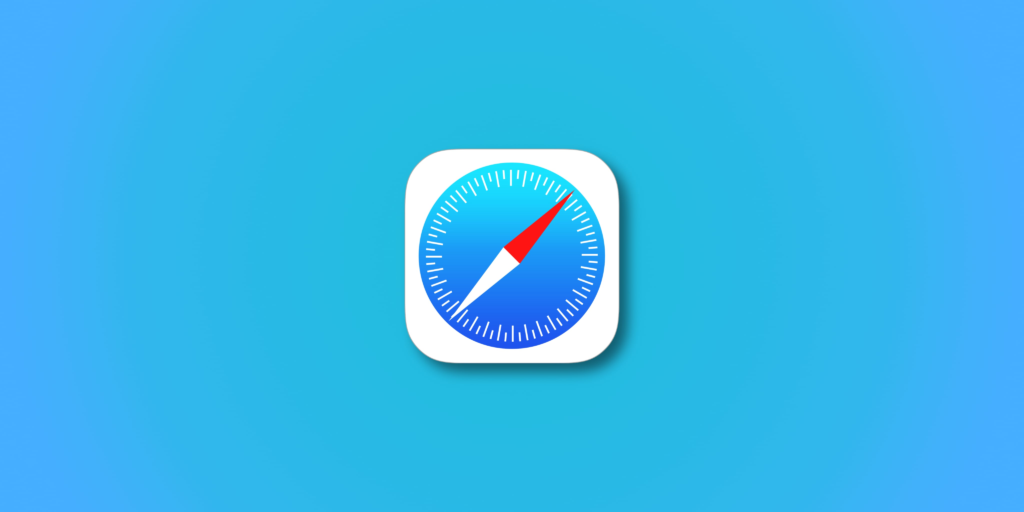In the complex world of web development, maintaining consistent performance across a wide range of browsers is the most challenging task. Safari is the most prominent of these and has much power inside the Apple ecosystem.
Within this digital environment, Safari Browser Testing becomes an essential task that includes the careful testing of web pages and web apps on various Safari versions. Come along as we explore the subtleties of Safari testing, revealing its obstacles and offering creative fixes to ensure your online presence is a dazzling highlight of every Safari expedition.
The Importance of Safari Browser Testing
Testing websites and web apps on many browsers is imperative to guarantee the best possible user experience and operation. Testing the Safari browser, in particular, is crucial for several reasons:
1. Market Share
Safari is quite well-known regarding online browsers, especially if Apple products like the Mac PCs, iPhone, and iPad are on the table. Therefore, if you don’t consider Safari compatibility, chances are you will be more explicit in offending several significant percentage segments of your audience.
2. Apple Ecosystem Users
Within the Apple ecosystem, users are frequently very valued and engaged. Making sure your online application or website functions flawlessly on Safari will boost customer happiness, conversions, and engagement with this group of users.
3. Performance Variability
Performance varies because different browsers understand and execute code differently. Regarding some features or design elements, Safari could treat them differently from other browsers like Chrome or Firefox. You can find and fix any performance problems unique to Safari by testing with it.

4. Feature Support
Compared to other browsers, Safari might support some web technologies, APIs, or CSS characteristics to varying degrees. By testing on Safari, you can ensure that your web application or website utilizes all of the features accessible for all major browsers.
5. Responsive Design
Your website or web application must utilize responsive design to properly display results on the Safari browser across Apple devices with different screen sizes and resolutions.
6. Bug Identification
Testing the Safari browser aids in finding any errors, malfunctions, or discrepancies that might exist just with this browser. You can avoid bad user experiences and keep your website or web application credible by spotting and resolving these problems early on.
7. Accessibility
All of Apple’s products—including Safari—highly value accessibility features. By testing on Safari, you can make sure that people with disabilities who use assistive technologies like VoiceOver can access your website or web application.
To sum up, Safari browser testing is essential to guaranteeing broad compatibility, top performance, and a smooth user experience on various online browser platforms, especially Apple devices. Web developers and testers must prioritize Safari testing in their quality assurance processes since failing to support Safari might result in lost opportunities and unhappy users.
Challenges of Safari Browser Testing
Testing the Safari browser has its own set of difficulties, yet being essential for guaranteeing a smooth user experience across multiple devices:
Challenge 1: Limited Testing Environment
In contrast to browsers such as Chrome and Firefox, Safari is primarily compatible with Apple hardware. This restriction can make it difficult for testers and developers who need access to Apple hardware to test the Safari browser thoroughly.
Solution:
Use cloud-based testing services that provide virtual access to Safari browsers and Apple hardware. Without requiring physical gear, remote testing environments are offered by AI-powered test orchestration and execution platforms like LambdaTest, allowing testers to access Safari on various Apple devices. It eliminates the need for direct access to Apple devices and allows extensive testing across several Safari versions. You can also test on Safari for Windows OS.
Challenge 2: Version Fragmentation
Like any other browser, Safari is used in numerous versions simultaneously. There could be differences, glitches, and compatibility problems between versions. Testing with several versions of Safari increases testing complexity and necessitates careful consideration of backward compatibility.

Solution:
Create a version compatibility matrix to help you focus your testing efforts according to the most used Safari versions. Allocate resources based on the versions with the highest user uptake rates. Moreover, wherever feasible, automate testing procedures to expedite cross-Safari compatibility assessments.
Challenge 3: Developer Tools
Although Safari’s developer tools have been enhanced over time, they might not be as solid or feature-rich as those provided by rival browsers, such as Firefox or Chrome. It can make it harder for developers who only use Safari to debug and troubleshoot.
Solution:
Add third-party tools to Safari’s developer tools, such as the Web Developer extension or Firebug. These tools can improve the developer experience using Safari and offer extra debugging functionalities. Urge developers to combine third-party extensions with Safari’s built-in features to get around restrictions and increase troubleshooting effectiveness.
Challenge 4: Vendor Prefixes
Compared to other browsers, Safari has always interpreted and supported CSS vendor prefixes differently. It may result in inconsistent styling and rendering, necessitating more work to guarantee cross-browser compatibility.
Solution:
Use CSS preprocessors such as Sass or LESS to standardize your CSS styling. With the help of these preprocessors, developers can create vendor-prefixed CSS rules in a form that is easier to read and write. Additionally, to find and fix any discrepancies early in the development process, test and validate styling frequently across many browsers, including Safari.
Challenge 5: Feature Support
Safari might not keep up with competing browsers when it comes to supporting specific web technologies, APIs, or CSS features. It may restrict the performance or usefulness of online apps on Safari, requiring workarounds or different approaches.
Solution:
Use graceful degradation and progressive enhancement approaches to ensure your application is compatible with Safari’s feature set. Using feature detection frameworks such as Modernizr, determine whether a particular feature or API is available in Safari and, if not, offer fallbacks or alternative implementations. Keep an eye on Safari’s feature roadmap and modify your development plans to use new features as they become available.
Challenge 6: Responsive Design Challenges
Due to differences in rendering behavior and viewport management, testing responsive designs on various devices and screen sizes with Safari can be difficult. Extensive testing and iteration are necessary to guarantee uniform layout and functioning across Apple devices.

Solution:
Use responsive design frameworks that provide significant cross-browser compatibility testing and optimization, such as Foundation or Bootstrap. Use media queries and viewport meta elements to guarantee consistent rendering behavior across various Apple devices and Safari versions. Additionally, browser testing tools should simulate different screen sizes and viewports during the development and testing stages.
Challenge 7: Performance Variability
Safari’s performance may vary from that of other browsers, especially regarding resource-intensive web applications or animations. It takes focused testing and optimization work to achieve performance optimized for Safari.
Solution:
Use performance profiling tools such as Google PageSpeed Insights or the Web Inspector in Safari to find performance bottlenecks unique to Safari. Improve the efficiency of resource loading, caching tactics, and animation methods in Safari on Apple devices. Regularly benchmark and test performance across various browsers to maintain optimal performance across all platforms.
Challenge 8: Accessibility Testing
Even though Safari has robust accessibility features, it might be difficult to guarantee complete compliance across various devices and versions. Careful attention to detail and extensive testing with assistive technologies are necessary when testing for accessibility on Safari.
Solution:
To find accessibility problems unique to Safari, use automated accessibility testing tools such as Axe or Wave. Manually test accessibility compliance across several Safari and Apple devices using assistive technologies such as VoiceOver. Work with accessibility specialists and include impaired users in the testing process to achieve thorough accessibility coverage and obtain insightful input.
Challenge 9: Cross-Platform Compatibility
Even though Safari is the default browser that runs on Apple products, users may install other browsers, such as Chrome or Firefox, on macOS to their computer and use them to browse websites and web apps. However, performing the testing on browsers other than Safari, which is commonly installed in Apple devices, acting as a platform for cross-compatibility testing is cumbersome, making the testing process a bit complex.
Solution:
To overcome the difficulty of cross-platform compatibility, testing must be done not just with Safari but also with other browsers, such as Chrome and Firefox, which are frequently used on Apple devices.
Thorough validation of website compatibility across several platforms is ensured by automating testing processes with technologies like Selenium, prioritizing popular browsers based on usage statistics, and keeping up with browser trends. This systematic approach guarantees a flawless user experience regardless of the browser being used on Apple devices.
Prioritizing popular browsers statistically based on usage, automating testing processes using Selenium, and eventually exploiting cloud-based testing platforms like LambdaTest increase the tremendous compatibility of the website across several platforms.
LambdaTest is a cloud-based testing infrastructure that provides access to various browsers across several operating systems, including Safari, Chrome, and Firefox. It is an AI-powered test orchestration and execution platform that supports over 3000 real devices, browsers, and operating systems.
If integrated into the cross-platform compatibility testing strategy, it further improves the process. LambdaTest enables testers to run automated test scripts simultaneously across several platforms and browsers, accelerating the testing cycle and guaranteeing thorough coverage.
Furthermore, LambdaTest’s real-time testing features allow instantaneous website behavior validation and debugging, speeding up the process of determining and resolving compatibility issues.
By utilizing LambdaTest with other testing tools and methodologies, developers can attain the best cross-platform compatibility for their web applications on Apple devices and other platforms.
Conclusion
To sum up, testing the Safari browser is an essential part of web development, especially when it comes to ensuring users have a smooth experience on various devices in the Apple ecosystem. As previously mentioned, the difficulties with testing Safari, such as its constrained testing settings, version fragmentation, developer tool limitations, and inconsistent feature support, highlight the urgent need for all-encompassing approaches and fixes.
Developers can efficiently handle these obstacles by utilizing cloud-based testing services, establishing version compatibility matrices, and adopting adaptable design frameworks. Third-party tools like CSS preprocessors and feature detection frameworks can also be included, allowing developers to improve compliance with Safari’s distinct features and speed up the testing process.
Moreover, by focusing testing and optimization efforts on specific performance variability and accessibility issues, web applications can be made to meet the needs of a wide range of users, including those with disabilities who depend on assistive technology like VoiceOver.
Ultimately, developers can improve the quality and accessibility of web experiences on Safari and maximize user satisfaction and engagement throughout the Apple ecosystem by taking a comprehensive approach that includes extensive testing, proactive adaptation to evolving browser features, and collaboration with accessibility specialists.
Safari browser testing becomes more than a challenge when effort, creativity, and a dedication to quality are put into it. It allows for the creation of exceptional digital experiences that appeal to people all over the world.
